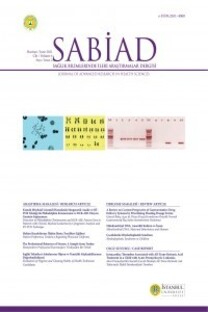A PHYLOGENETIC APPROACH TO EVALUATE THE RELATION BETWEEN miRNA EXPRESSIONS AND HEPATITIS C VIRUS IN HEPATOCELLULAR CARCINOMA
Objective: Hepatitis C virus(HCV) infection increases the risk for Hepatocellular carcinoma (HCC) development, which is the sixth most common cancer type worldwide. HCV-related HCC has high mortality rates and HCV genotype is shown to affect survival in HCC. Two molecules that are known to be associated with poor cancer prognosis in HCC are endoplasmic reticulum transmembrane stromal interaction molecule 1(STIM1) and plasma membrane calcium channel(Orai1). Materials and Methods: In this study, we have enhanced STIM1 and/or Orai1 expressions in subpopulation of cancer-stem-cell-like cells in Huh7 HCC cell line in order to mimic poor cancer prognosis and performed next generation sequencing on small RNA samples isolated from these cells in order to identify the changes in miRNA expression patterns. Multiple alignment and phylogenetic analysis were used on stem loop sequences of miRNAs with significant expression changes and tried to identify a possible evolutionary relation of these miRNAs with HCV genotypes. Results: Our results showed that there were 5 different regions in HCV genome where these miRNAs are mostly aligned. miR4521, miR3651, miR7974 and miR6715a showed closed relations with HCV-genotypes-1 and -7 within these regions. These miRNAs also known to be related with cancer progression in several cancer types including HCC. Conclusion: We propose that a phylogenetic approach can be helpful to evaluate the evolutionary strategies of cancer promoting viruses as well as possible viral origins of miRNAs that play role in cancer progression.
A PHYLOGENETIC APPROACH TO EVALUATE THE RELATION BETWEEN miRNA EXPRESSIONS AND HEPATITIS C VIRUS IN HEPATOCELLULAR CARCINOMA
Objective: Hepatitis C virus(HCV) infection increases the risk for Hepatocellular carcinoma (HCC) development, which is the sixth most common cancer type worldwide. HCV-related HCC has high mortality rates and HCV genotype is shown to affect survival in HCC. Two molecules that are known to be associated with poor cancer prognosis in HCC are endoplasmic reticulum transmembrane stromal interaction molecule 1(STIM1) and plasma membrane calcium channel(Orai1). Materials and Methods: In this study, we have enhanced STIM1 and/or Orai1 expressions in subpopulation of cancer-stem-cell-like cells in Huh7 HCC cell line in order to mimic poor cancer prognosis and performed next generation sequencing on small RNA samples isolated from these cells in order to identify the changes in miRNA expression patterns. Multiple alignment and phylogenetic analysis were used on stem loop sequences of miRNAs with significant expression changes and tried to identify a possible evolutionary relation of these miRNAs with HCV genotypes. Results: Our results showed that there were 5 different regions in HCV genome where these miRNAs are mostly aligned. miR4521, miR3651, miR7974 and miR6715a showed closed relations with HCV-genotypes-1 and -7 within these regions. These miRNAs also known to be related with cancer progression in several cancer types including HCC. Conclusion: We propose that a phylogenetic approach can be helpful to evaluate the evolutionary strategies of cancer promoting viruses as well as possible viral origins of miRNAs that play role in cancer progression.
___
- Wellek S, Blettner M. On the proper use of the crossover design in clinical trials: part 18 of a series on evaluation of scientific publications. Dtsch Arztebl Int. 2012;109(15):276-81.
